/***************************************************************************
** **
** QCustomPlot, an easy to use, modern plotting widget for Qt **
** Copyright (C) 2011, 2012, 2013, 2014 Emanuel Eichhammer **
** **
** This program is free software: you can redistribute it and/or modify **
** it under the terms of the GNU General Public License as published by **
** the Free Software Foundation, either version 3 of the License, or **
** (at your option) any later version. **
** **
** This program is distributed in the hope that it will be useful, **
** but WITHOUT ANY WARRANTY; without even the implied warranty of **
** MERCHANTABILITY or FITNESS FOR A PARTICULAR PURPOSE. See the **
** GNU General Public License for more details. **
** **
** You should have received a copy of the GNU General Public License **
** along with this program. If not, see http://www.gnu.org/licenses/. **
** **
****************************************************************************
** Author: Emanuel Eichhammer **
** Website/Contact: http://www.qcustomplot.com/ **
** Date: 27.12.14 **
** Version: 1.3.0 **
****************************************************************************/
#include "qcustomplot.h"
////////////////////////////////////////////////////////////////////////////////////////////////////
//////////////////// QCPPainter
////////////////////////////////////////////////////////////////////////////////////////////////////
/*! \class QCPPainter
\brief QPainter subclass used internally
This QPainter subclass is used to provide some extended functionality e.g. for tweaking position
consistency between antialiased and non-antialiased painting. Further it provides workarounds
for QPainter quirks.
\warning This class intentionally hides non-virtual functions of QPainter, e.g. setPen, save and
restore. So while it is possible to pass a QCPPainter instance to a function that expects a
QPainter pointer, some of the workarounds and tweaks will be unavailable to the function (because
it will call the base class implementations of the functions actually hidden by QCPPainter).
*/
/*!
Creates a new QCPPainter instance and sets default values
*/
QCPPainter::QCPPainter() :
QPainter(),
mModes(pmDefault),
mIsAntialiasing(false)
{
// don't setRenderHint(QPainter::NonCosmeticDefautPen) here, because painter isn't active yet and
// a call to begin() will follow
}
/*!
Creates a new QCPPainter instance on the specified paint \a device and sets default values. Just
like the analogous QPainter constructor, begins painting on \a device immediately.
Like \ref begin, this method sets QPainter::NonCosmeticDefaultPen in Qt versions before Qt5.
*/
QCPPainter::QCPPainter(QPaintDevice *device) :
QPainter(device),
mModes(pmDefault),
mIsAntialiasing(false)
{
#if QT_VERSION < QT_VERSION_CHECK(5, 0, 0) // before Qt5, default pens used to be cosmetic if NonCosmeticDefaultPen flag isn't set. So we set it to get consistency across Qt versions.
if (isActive())
setRenderHint(QPainter::NonCosmeticDefaultPen);
#endif
}
QCPPainter::~QCPPainter()
{
}
/*!
Sets the pen of the painter and applies certain fixes to it, depending on the mode of this
QCPPainter.
\note this function hides the non-virtual base class implementation.
*/
void QCPPainter::setPen(const QPen &pen)
{
QPainter::setPen(pen);
if (mModes.testFlag(pmNonCosmetic))
makeNonCosmetic();
}
/*! \overload
Sets the pen (by color) of the painter and applies certain fixes to it, depending on the mode of
this QCPPainter.
\note this function hides the non-virtual base class implementation.
*/
void QCPPainter::setPen(const QColor &color)
{
QPainter::setPen(color);
if (mModes.testFlag(pmNonCosmetic))
makeNonCosmetic();
}
/*! \overload
Sets the pen (by style) of the painter and applies certain fixes to it, depending on the mode of
this QCPPainter.
\note this function hides the non-virtual base class implementation.
*/
void QCPPainter::setPen(Qt::PenStyle penStyle)
{
QPainter::setPen(penStyle);
if (mModes.testFlag(pmNonCosmetic))
makeNonCosmetic();
}
/*! \overload
Works around a Qt bug introduced with Qt 4.8 which makes drawing QLineF unpredictable when
antialiasing is disabled. Thus when antialiasing is disabled, it rounds the \a line to
integer coordinates and then passes it to the original drawLine.
\note this function hides the non-virtual base class implementation.
*/
void QCPPainter::drawLine(const QLineF &line)
{
if (mIsAntialiasing || mModes.testFlag(pmVectorized))
QPainter::drawLine(line);
else
QPainter::drawLine(line.toLine());
}
/*!
Sets whether painting uses antialiasing or not. Use this method instead of using setRenderHint
with QPainter::Antialiasing directly, as it allows QCPPainter to regain pixel exactness between
antialiased and non-antialiased painting (Since Qt < 5.0 uses slightly different coordinate systems for
AA/Non-AA painting).
*/
void QCPPainter::setAntialiasing(bool enabled)
{
setRenderHint(QPainter::Antialiasing, enabled);
if (mIsAntialiasing != enabled)
{
mIsAntialiasing = enabled;
if (!mModes.testFlag(pmVectorized)) // antialiasing half-pixel shift only needed for rasterized outputs
{
if (mIsAntialiasing)
translate(0.5, 0.5);
else
translate(-0.5, -0.5);
}
}
}
/*!
Sets the mode of the painter. This controls whether the painter shall adjust its
fixes/workarounds optimized for certain output devices.
*/
void QCPPainter::setModes(QCPPainter::PainterModes modes)
{
mModes = modes;
}
/*!
Sets the QPainter::NonCosmeticDefaultPen in Qt versions before Qt5 after beginning painting on \a
device. This is necessary to get cosmetic pen consistency across Qt versions, because since Qt5,
all pens are non-cosmetic by default, and in Qt4 this render hint must be set to get that
behaviour.
The Constructor \ref QCPPainter(QPaintDevice *device) which directly starts painting also sets
the render hint as appropriate.
\note this function hides the non-virtual base class implementation.
*/
bool QCPPainter::begin(QPaintDevice *device)
{
bool result = QPainter::begin(device);
#if QT_VERSION < QT_VERSION_CHECK(5, 0, 0) // before Qt5, default pens used to be cosmetic if NonCosmeticDefaultPen flag isn't set. So we set it to get consistency across Qt versions.
if (result)
setRenderHint(QPainter::NonCosmeticDefaultPen);
#endif
return result;
}
/*! \overload
Sets the mode of the painter. This controls whether the painter shall adjust its
fixes/workarounds optimized for certain output devices.
*/
void QCPPainter::setMode(QCPPainter::PainterMode mode, bool enabled)
{
if (!enabled && mModes.testFlag(mode))
mModes &= ~mode;
else if (enabled && !mModes.testFlag(mode))
mModes |= mode;
}
/*!
Saves the painter (see QPainter::save). Since QCPPainter adds some new internal state to
QPainter, the save/restore functions are reimplemented to also save/restore those members.
\note this function hides the non-virtual base class implementation.
\see restore
*/
void QCPPainter::save()
{
mAntialiasingStack.push(mIsAntialiasing);
QPainter::save();
}
/*!
Restores the painter (see QPainter::restore). Since QCPPainter adds some new inte
QT中利用QCustomPlot类画曲线图
KimHerojae
- 粉丝: 15
- 资源: 4
最新资源
- C语言基础-C语言编程基础之Leetcode编程题解之第33题搜索旋转排序数组.zip
- 基于Python实现的手写数字识别系统源码.zip
- 从网页提取禁止转载的文字
- C语言基础-C语言编程基础之Leetcode编程题解之第32题最长有效括号.zip
- C语言基础-C语言编程基础之Leetcode编程题解之第31题下一个排列.zip
- C语言基础-C语言编程基础之Leetcode编程题解之第30题串联所有单词的子串.zip
- C语言基础-C语言编程基础之Leetcode编程题解之第29题两数相除.zip
- C语言基础-C语言编程基础之Leetcode编程题解之第28题找出字符串中第一个匹配项的下标.zip
- 实验报告模板(1).docx
- C语言基础-C语言编程基础之Leetcode编程题解之第26题删除有序数组中的重复项.zip
资源上传下载、课程学习等过程中有任何疑问或建议,欢迎提出宝贵意见哦~我们会及时处理!
点击此处反馈

















- 1
- 2
- 3
前往页